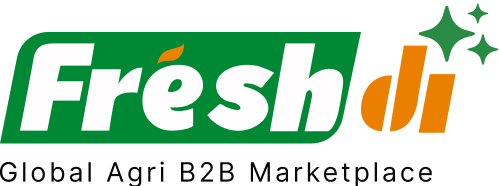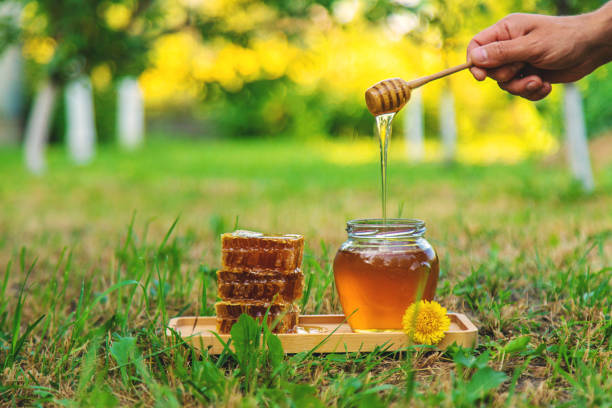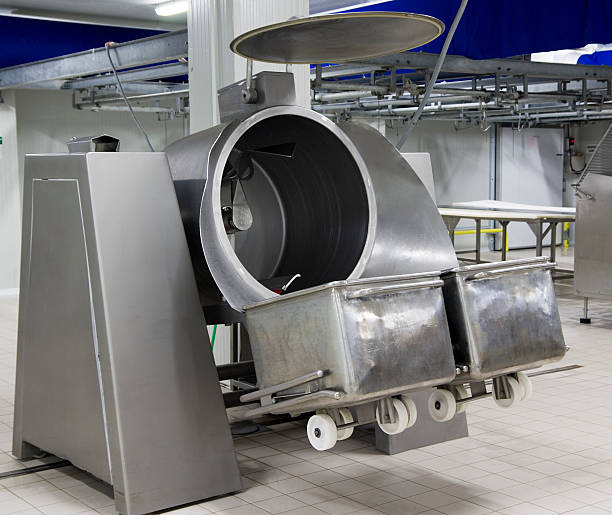Introduction – Belgium’s Honey Market in Statistical Focus
When most people think about honey, they picture golden jars from beekeepers in sunny fields. But Belgium? It’s not the first country that comes to mind. Surprisingly, Belgium is a major player in the global honey game—but not for the reasons you might think. While local production is modest (about 2,700 tonnes in 2023), Belgium punches way above its weight when it comes to importing and re-exporting honey.
In fact, Belgium ranked as the second-largest importer of honey in the EU, accounting for 19% of EU honey imports, with over 31,400 tonnes brought in during 2023. That’s a big deal. Even more interesting, Belgium re-exports significant volumes—11,111.6 tonnes in 2023—making it a strategic distribution hub in Europe.
So, if you’re a business in the honey trade, Belgium isn’t just a transit point—it’s a gateway. The trick? Choosing the right suppliers. That’s where data, verified sources, and platforms like Freshdi come in. From RFQ trends to supplier ratings, market intelligence is key to navigating this complex ecosystem.
Deep Dive – Key Production, Export Statistics & Current Demand Data
Let’s go beneath the surface and look at what the numbers really tell us.
Production Realities
Belgium’s 2,700 tonnes of honey production in 2023 may seem decent, but it’s relatively small when stacked against national demand. That’s why Belgium relies heavily on honey imports—not just to meet internal needs, but also to maintain its role as a top re-exporter.
Import Footprint
Belgium’s 31,400 tonnes of honey imports in 2023 came mostly from non-EU countries. The top sources?
- China: 21,383 tonnes
- Ukraine: 3,850 tonnes
- Mexico: 1,569 tonnes
This mix of suppliers helps Belgium maintain a diverse and price-sensitive supply chain.
Export Muscle
Even though Belgium isn’t a top producer, it is a top exporter. In 2023:
- 11,111,600 kg of honey was exported.
- Export value: $48.9 million.
- Top destinations:
- Netherlands: 4,252,850 kg
- France: 2,874,860 kg
- Sweden: 1,851,860 kg
- Germany: 1,427,010 kg
Clearly, Belgium plays a pivotal role as a European redistribution center.
Demand Signals
According to data from Freshdi, buyer requests for organic, non-GMO, and fair-trade honey are climbing. Between 2018 and 2022, Belgium’s organic retail sales grew at an average of 8.2% annually, reaching €955 million in 2023. That’s a strong indicator of where the market’s headed—and what kind of honey is in demand.
Top 5 Verified Honey Suppliers in Belgium – Leading Exporters by Volume
Choosing the right supplier is like picking the right teammate—you want someone reliable, proven, and easy to work with. Based on export volumes, certifications, and supplier ratings on Freshdi, here are the top 5 honey suppliers in Belgium for Q3 2025:
1. ADVACHEM
Known for their high-volume exports and robust international partnerships, ADVACHEM has built a strong reputation across Europe and beyond. They’re especially recognized for consistent quality and responsive logistics.
2. OMA GROUP
OMA GROUP has a well-documented export record and is highly rated on Freshdi for customer service and traceability. Their portfolio includes conventional and organic honey options.
3. Bakbel Europe SA
This supplier specializes in bulk honey for industrial use and has strong ties with clients in the food and beverage sector. Their vertically integrated supply chain ensures quality from hive to jar.
4. Arpaccio
Arpaccio is a rising star in the Belgian honey export market. Their focus on sustainable sourcing and organic certifications makes them an appealing choice for health-conscious brands.
5. NATURAL HUB PALLANGYO
Specializing in premium honey variants, NATURAL HUB PALLANGYO consistently meets high export standards. Their diversified product line includes rare and exotic honey types.
Dynamic Ranking Note: Platforms like Freshdi offer “Suppliers of the Month/Quarter” lists, highlighting top performers and emerging exporters based on recent trade activity, feedback, and RFQ fulfillment rates. Keep an eye out—today’s rising star might be tomorrow’s market leader.
Market Navigation – Statistical Trends, Price Insights & Export Dynamics
Belgium’s honey trade is anything but static. From price shifts to emerging buyer preferences, understanding the market pulse is crucial.
Import & Export Trends
In 2023:
- Imports: 37,000 tons (down 6.4% from 2022, but with a +9.8% CAGR from 2020–2023).
- Exports: 27,000 tons (a 16% drop from 2022).
Top import partners:
– China: 21,500 tons
– Vietnam: 3,500 tons
– Germany: 2,900 tons
Top export destinations:
– France: 6,200 tons
– Germany: 5,700 tons
– Netherlands: 5,300 tons
Seasonal Price Fluctuations
Honey prices swing with the seasons and global events:
- Import Prices (Feb 2025): $2,120/ton (stable from Jan, but down from $3,517/ton in Dec 2024).
-
By Supplier:
- Netherlands: $4,617/ton
- China: $1,506/ton
-
Export Prices (Feb 2025): $2,645/ton (up 11% from Jan, but down from Dec’s $2,856/ton).
- By Destination:
- France: $3,867/ton
- Poland: $1,490/ton
This volatility means timing your purchase or sale matters—a lot. Seasonal planning and historical data analysis from platforms like Freshdi can help you strategize better.
Forecasts: What’s Next?
- Imports: Expected to decline slightly to 23,000 tons by 2025, then stabilize through 2028.
- Exports: Forecasted to hold steady at 20,000 tons per year.
- Per Capita Consumption: To drop from 0.42 kg (2024) to 0.37 kg (2028), signaling a shift in consumer habits.
Organic Honey – The Growth Engine
Europe’s organic honey market is booming, projected to hit €1.6 billion by 2032. Belgium, with its growing organic food retail sector, is well-positioned to benefit—especially for importers and exporters aligned with organic certifications.
Conclusion – Leveraging Data for Optimized Supply Chains
Belgium may not produce the most honey, but it remains one of the most strategically important countries in the global honey trade. Its role as a top importer and re-exporter, combined with evolving consumer trends (like the organic boom), makes it a market full of potential—and full of complexity.
For businesses aiming to succeed in this space, it’s all about making data-informed decisions. That means:
- Choosing suppliers with proven export records and certifications.
- Understanding seasonal price shifts and supply chain disruptions.
- Monitoring demand trends through RFQs and buyer behavior.
That’s where Freshdi comes into play. With tools that track supplier performance, market trends, and RFQ data, platforms like Freshdi are becoming essential for businesses that want not just to survive, but to thrive in the global honey trade.
Key Takeaways
- Belgium is the EU’s #2 honey importer, despite limited domestic production.
- It re-exports over 11,000 tonnes of honey annually, mostly to neighboring EU countries.
- Demand for organic honey is rising fast, opening new doors for certified suppliers.
- Price volatility requires smart, data-driven purchasing and selling strategies.
- Verified platforms like Freshdi offer a competitive edge through real-time insights and supplier verification.
Checklist for Buyers: Honey Procurement in Belgium
✅ Verify supplier certifications (organic, fair-trade, ISO, etc.)
✅ Check historical export data and buyer reviews (use Freshdi)
✅ Monitor seasonal price trends and place orders strategically
✅ Explore RFQ trends to assess demand and competition
✅ Prioritize suppliers with strong logistics and re-export capabilities
Future Outlook: Belgium’s Role in a Sweeter Tomorrow
Looking ahead, Belgium will likely retain its status as a European honey hub, especially as demand for organic and specialty honeys grows. For exporters and importers alike, the market offers stability, volume, and access to broader EU markets.
Platforms like Freshdi will continue to play a key role, helping buyers and sellers make smarter, faster, and safer trade decisions in an increasingly competitive landscape.
FAQs
1. Why is Belgium such a major player in the honey market despite low production?
Because it acts as a distribution hub. Belgium imports large volumes of honey and re-exports them to other EU countries, thanks to its strategic location and trade infrastructure.
2. How can I find verified honey suppliers in Belgium?
Platforms like Freshdi provide supplier verification, RFQ trends, and buyer reviews, helping you choose reliable partners.
3. Is there a demand for organic honey in Belgium?
Yes! Organic honey demand is growing rapidly in Belgium, in line with broader EU trends. Organic retail sales reached €955 million in 2023.
4. What are the current price trends for honey imports and exports?
Prices have been fluctuating. Import prices dropped from a high in Dec 2024, while export prices saw a slight increase in early 2025. Timing your trade is key.
5. What makes Freshdi different from other B2B platforms?
Freshdi offers real-time market data, supplier performance insights, and verified RFQs, making it a powerful tool for honey buyers and exporters.
References
- cbi.eu – Market potential for certified honey
- Brussels Times – Belgium’s Honey Imports
- WITS – Belgium Honey Export Data
- IndexBox – Honey Price Insights
- ReportLinker – Market Forecasts
- Eurostat – EU Honey Imports
- Freshdi – Verified Supplier Listings





